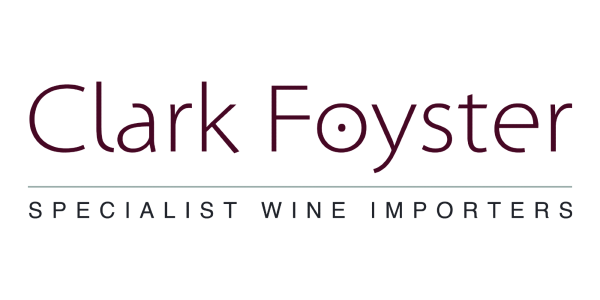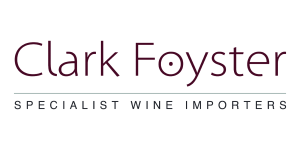The buying philosophy of our small business is simple. We aim to source wines of quality, integrity, balance and texture.
In nearly all cases these are family-run estates, whether recently-founded or long-established. But of equal importance for us are the personal relationships we develop with our suppliers. We are proud to be able to consider many of them family friends and are working together with them for the long term. Unquestionably this stability gives both parties the best opportunities to develop sales, profiles and the reputation of the wines and the regions. It is crucial for us as importers to feel we share similar goals with our suppliers.
We import fine wine to the UK, from countries including Austria, England, France (Burgundy, Champagne, Languedoc, Rhône, Roussillon and Touraine), Georgia, Greece, Madeira, Portugal & Australia.
Our Australian portfolio is small, and might never have existed but for a serendipitous meeting with Mac Forbes on his way back to his native Yarra Valley after some consultancy work in Austria. We have an unashamed Europhile palate here at CF Wines, and have no intentions of covering mainstream Australia. But these wines – and any others we may add – have to fit our buying brief: cool, elegant, restrained, and refreshing. What is more, they show at a single stroke how poor is our understanding of Australian wine as a monolithic structure dominated by 10 producers. The reputation and the future of Australian wine are in the hands of producers like Mac, and we observe in 2022 how dramatically the scene has changed.
We first went to Austria in 1998 and returned thrilled by the variety, complexity and quality of the wines we came across there. The first pallet took an age to sell, but the word has gradually spread and Austrian wines are no longer quite the tiny niche they represented then. Our original five suppliers have more than doubled, and we are proud of our position as a leading importer of Austrian wines in the UK. Quality is so impressively high throughout Austria, and the voracious appetite of the Austrians for their own wines unabated, which puts pressure on supply and prices. There is much work still to be done in bringing these wines towards the mainstream, but we have come a long way over the past 20 years.
We have never followed the flock in our search for interesting wines, and of course no other country is better represented on the UK market than France, quite deservedly so. But I could not imagine life as a serious wine importer without the constant reminder of the vinous richness of France (I tried it once for three long years…) and all the reference points for other countries’ wines are here. We are told France has struggled in recent years, and of course it can produce utter dross; it is certainly true that France has been slow to respond to the marketing challenge laid down by the new countries. But there are some wines of sensational quality everywhere in the country and, because of the enormity of scale in France, there is a phenomenally rich and dynamic wine culture to discover.
I first visited Georgia on a MW visit in 2015. We had a whirlwind trip of five days, to cover most of the wine-producing parts of the country. We ate like kings – and greedy pigs! – and were warmly welcomed everywhere. But when it came to understanding the wines, I might as well have been on the moon. Even after deciphering the country’s beautiful script, I still realised, looking at names on labels, that I wasn’t sure which word related to the region, which to the producer and which to the grape variety. There were some hits (and many misses) amongst the wines we tasted, but clear signs of a wine industry keen to reinvent itself as a source of quality wines. The old USSR market for cheap quantity has gone, replaced with a confidence that at least some of the country’s 5,000 or more indigenous grape varieties can have a great international future.
I made the visit mainly in tribute to the country’s reputation as cradle of viticulture and wine production. On Day 1 of the visit we were all taken to the archaeological museum to admire the evidence of 8,000 year old ‘qvevri’ (clay vessels, still used for winemaking). I hadn’t realised how important wine had been throughout the country’s history, particularly over the last 1,500 years since Georgia embraced Christianity. Whether the country is really a European or an Asian one depends on political, cultural and historical perspectives, but there is no doubt that they are looking more to the west now to develop their markets. As Georgian culture and cuisine becomes trendy, and the capital Tbilisi becomes an increasingly popular holiday destination, we will see more and more of the wines from this exciting corner.
There is a sharp increase in interest and demand for the wines of Greece.
As part of our university degrees, both Isabelle and I studied the history, culture and literature of Ancient Greece. This required visits, of course, usually during summer months, and involved beaches, tavernas, souvlaki, ouzo, retsina etc. And we loved it – so much that we spent our honeymoon in Crete and the Mani. But there wasn’t much wine to excite us. We remember the brown stuff that poured from the copper-coloured jugs, never quite sure if they were supposed to be red or white. We generally steered clear of that (except for a famous night on Ikaria with ‘The Captain’!) and so we never really thought of Greece as a serious wine country until the whisperings about the quality of Santorini came our way. Stefanos Georgas, who was working with Estate Argyros at the time, called me one day to talk about Santorini and assured me I would be impressed by the quality of the wines. I replied that I was sure I would, but that we didn’t have time or resources to start with a completely new country. He was patient and we kept in touch and he sent samples (which were very good). In 2013 I joined Constantinos Lazarakis’ trip to Greece that he organised for the MWs, and was astonished by how many ambitious young winemakers there were, and how many good wines. So we finally began with Santorini, and then added wines from other producers and regions. Seven years later we have a nice portfolio which covers quite a few of the many different styles the country produces.
There are the firm, dry, rich but austere whites from Assyrtiko on Santorini; aromatic whites from Malagouzia and Moschofilero; the new star in waiting, Vidiano from Crete; fruity red from Agiorgitiko in the Peloponnese; juicy, herbal, pinot-esque reds from our new discovery, Limniona in Thessaly; Barolo-beaters from the wonderful Xinomavro grape in Naoussa in Northern Greece. There’s so much variety, and quality improves with every vintage.
I’ve loved Madeira – island and people and wine – since my first trip on a WSET Diploma scholarship in 1987. That year there was no question on Madeira (about which I knew zero) but the prize was awarded for the best answer to a question on Portuguese mainland wines (which I did know a bit about). So off I went. I had a charming, elderly guide and chauffeur for the week, who was charged with delivering and collecting me from the various Madeira producers I was due to visit, and taking me round the island on one of the days. The roads were crazy, hairpin bends everywhere. This is before EU money made Madeira a Mecca for civil engineers in the 1990s. I had passed my driving test a month or two before, so when my elderly ‘chauffeur’ asked if I minded driving since he was recovering from a heart attack, I jumped at the chance. A little later he informed me that the brakes on the car were not great and needed a bit of pumping. We survived.
I visited all the houses, and my clothes came home reeking of Madeira. (The only time a bottle has ever broken in my luggage!) I remember meeting Jorge Borges Gonçalves at H.M. Borges, and I still have the (now empty) bottle of Sercial 1940 vintage which he gave to me.
Almost 30 years later we finally began importing from Madeira, and the wines are as unique and ageless as ever. They are also a lot more expensive. But they are unique and inimitable. In the wine world we talk a lot about how we prize the uniqueness of flavour which comes from particular wines from particular regions, and there is surely no wine region which is more inimitable than Madeira, especially the very finest wines after a minimum of 20 years in barrel.
I first visited Portugal aged eight in 1969, and then frequently afterwards on family holidays. So it seemed obvious for me to look closely at the country’s wines when I began my journey into wine. In 1988 I tramped around the Alentejo on a bursary from the Vintners’ Company and saw a region just beginning to awaken to the opportunities to develop markets abroad. I have observed many, many changes in the Portuguese wine world over the past 25 years, and there have been frustrations aplenty. The word “potential” has hung round the neck of Portuguese wine for far too long. But as the market matures, young producers gain more confidence from looking outside their own country and take proper notice of what it is realistic to expect to sell on the international market, and the opportunities are inspiring. There is a phenomenal depth of variety in grapes, terroir, climate, tradition, modernity within such a small country. We have barely scratched the surface.






















































